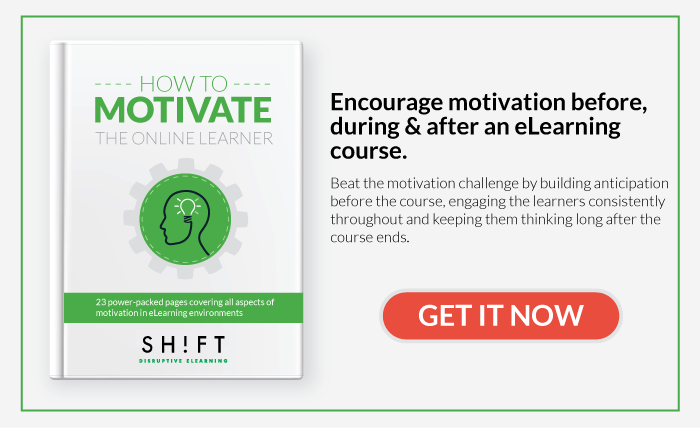As an instructional designer, your primary goal is to develop effective eLearning courses. You should address the objectives for each lesson, use the correct instructional method to meet the needs of the learners, and ensure the content and all its related activities are meaningful and relevant. After all, adult learners are not interested in completing "busy work" with no real-world application toward achieving their academic goals.
As with any project, gathering necessary information upfront is beneficial to obtain a successful output.
Try asking yourself these four questions before creating that new eLearning course; they will provide clarity and will avoid possible traps in the process:
1) WHO?
Who are the learners?
Successful instructional planning requires understanding your audience's needs, goals, and challenges. You definitely don't want learners coming across content and features they may never ever use, that's why doing a learner analysis before starting to develop the course can help you create more targeted and useful content that learners can apply in their daily life immediately.
So, before anything else, develop a learner profile by listing your audience's key characteristics.
Consider these questions to guide your eLearning course design:
- What type of workers generally take the course? What is their education level? Their skill level? Average years of experience?
- What a typical day is like? (Particularly related to their jobs).
- What are the circumstances of their work environment? Including frustrations, challenges, and common roadblocks.
- Do they take this course as a major requirement or is it optional?
- How much background knowledge do workers typically have on the subject?
Learn all you can about your audience prior to starting the course design to ensure it meets their needs.
Also read: These 27 Questions Will Help You (Really) Know Your Learners
2) WHY?
Why is the training necessary?
Truth is people make decisions based on what’s in their own best interest. This is the main motivator for their actions and that’s why training must be relevant and provide useful information.
“What’s in it for me?” is what your learners want to know.
So, before anything else, define the benefits workers will receive from the eLearning course...and consistently weave the messages throughout your course.
Adult learners are busy with multiple obligations and don't want to waste time on courses that are not relevant, or that will not provide any real-world transferable, applicable knowledge or skills. Be concrete in your examples, give them actionable tips, and add interactive activities and videos from relevant experts related to the subject, that all speak to how the course will help them.
Also read: Why You Should Be Designing eLearning Courses Backwards
3) WHAT?
What do learners need to be able to do after completing the course or learning specific material?
Focus on your ultimate goal of aligning your content with your learner’s needs and context. Considering the types of situations in which learners will need to apply their learning and tailor your approach accordingly. Don't strictly focus on topics and content -- this nearly always results in boring walls of text and no applicable realistic scenarios played out through interactive activities.
Always begin with the question: What must the learner be able to do upon completion of the course? This will guarantee your eLearning course is fully learner-centered.
Remember: “Adults are life-centered (problem-centered) in their orientation to learning. They want to learn what will help them perform tasks or deal with problems they confront in everyday situations and those presented in the context of application to real-life” (Knowles).
Don’t use all the "bells and whistles" available, but instead focus on facilitating designated learning outcomes and diligently remove or omit anything that doesn't directly support these outcomes.
Also read:
6 Essential Content Creation Tips For eLearning Success
5 Rules for Creating Relevant and Fluff-free Courses
4) HOW?
How can your audience best learn the subject or skill?
This question and all its components will help you formulate ideas regarding the most effective strategies and best method to use for presenting the course material.
First focus on how you will structure and sequence the events of instruction, and then create conditions that foster learning. This approach can enhance the integrity of the subject matter as you focus on what the learners know and what they still need to learn.
The strategies you use will dictate the most relevant and appropriate instructional materials, activities, and assessments for optimal outcomes.
Effective eLearning courses and instructional design incorporate diverse training methods. Since adult learners learn primarily by doing, gives them the opportunity to apply the information, practice the skills, and receive feedback during the training.
Consider these questions to guide your eLearning course design:
- How should content be organized? Also read: Organize Content Effectively to Maximize Student Learning
- How should ideas be presented to learners?
- What types of activities and exercises will best help participants learn at a deeper level?



